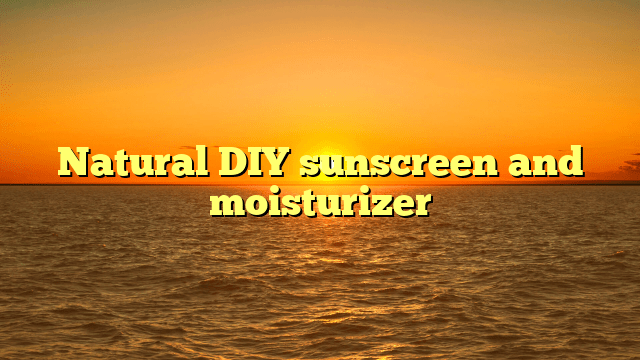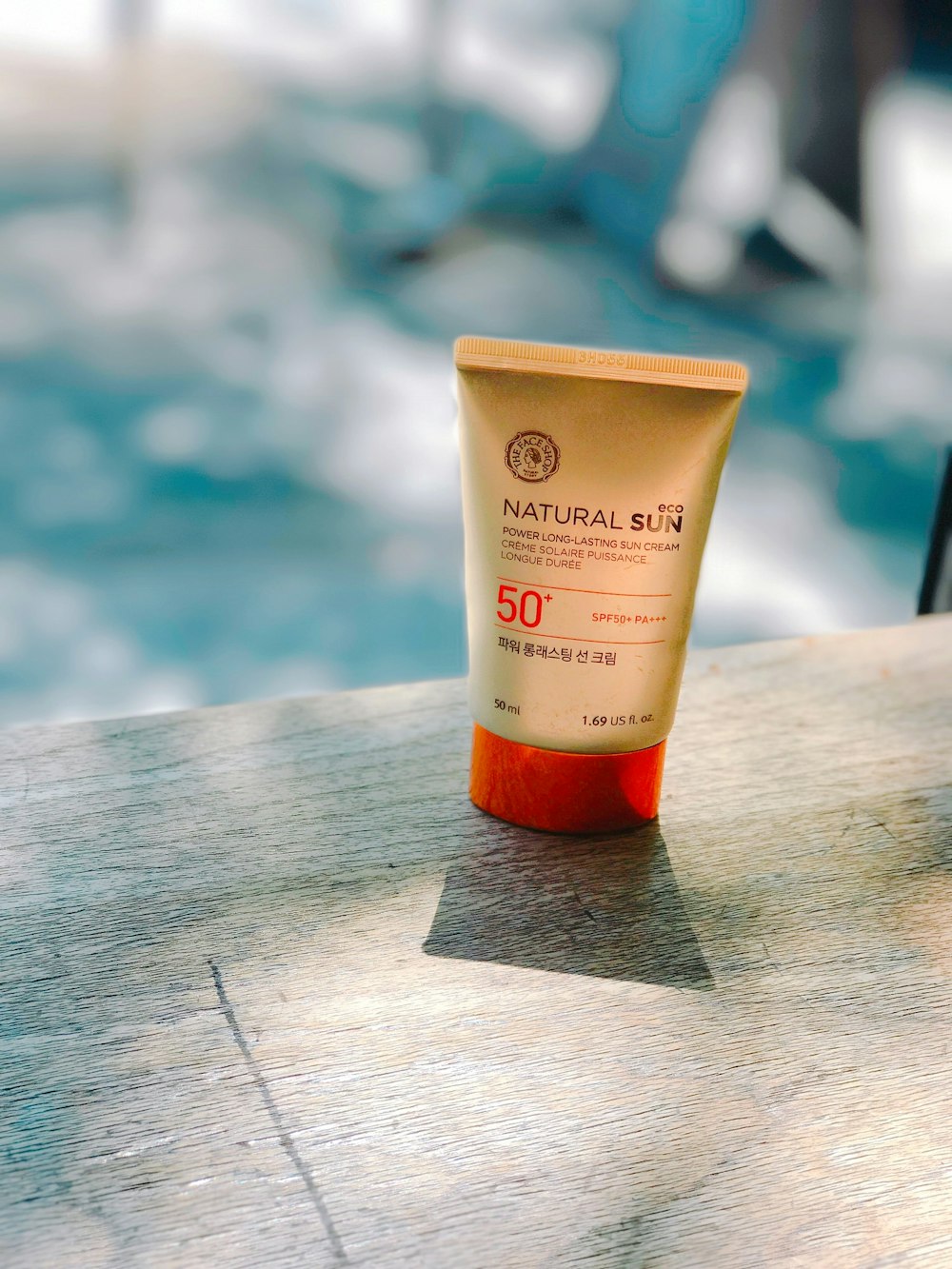Beauty Tips FREE Professional Courses
Natural DIY sunscreen: Summer is upon us, and with it, the need for adequate sun protection becomes paramount. With the increasing awareness about the potential harms of many commercial sunscreens, many of us are turning to do-it-yourself (DIY) alternatives. This comprehensive guide will walk you through the process of making your own DIY sunscreen, offering a natural and safe option for you and your family.
Beauty Tips FREE Professional Courses
Why Opt for DIY Sunscreen?
Navigating the Sunscreen Market
When it comes to protecting your skin from the sun’s harmful rays, the market is flooded with products, each claiming to be the best. However, not all sunscreens are created equal. In fact, many store-bought sunscreens contain chemicals that can potentially be harmful.
Parabens, for example, are common preservatives used in many sunscreens. Acting as synthetic estrogenic compounds, they can disrupt hormone signalling, particularly during critical development stages. The Environmental Working Group (EWG) has raised concerns about this, highlighting the potential adverse effects on development, reproduction, and the neurological and immune systems.
Similarly, many sunscreens contain a form of Vitamin A known as retinyl palmitate. Despite its antioxidant properties, studies by the National Toxicology Program (NTP) have suggested that it may increase the development of skin tumours and lesions when exposed to sunlight.
The Cost Factor
Quality sunscreens that are free of harmful chemicals can often be quite expensive, particularly for larger families or those who enjoy spending a lot of time outdoors. This is where DIY sunscreen can become a cost-effective alternative.
The Natural Alternative
By making your own sunscreen, you have complete control over the ingredients, ensuring that only safe and natural products are being applied to your skin. Plus, it gives you the opportunity to customise your sunscreen to suit your specific needs, such as skin type and desired sun protection factor (SPF).
Understanding SPF and Sun Protection
Before we delve into the process of making DIY sunscreen, it’s important to understand the concept of sun protection factor (SPF). SPF is a measure of how well a sunscreen will protect your skin from ultraviolet (UV) rays, specifically UVB rays which are responsible for causing sunburn.

However, it’s important to note that no sunscreen can block 100% of UV rays. Even a sunscreen with an SPF of 50 will only block 98% of UVB rays. This is why it’s important to also seek shade and wear protective clothing, in addition to applying sunscreen.
In DIY sunscreens, the key ingredient that provides SPF is zinc oxide. This mineral powder offers broad-spectrum protection against both UVA and UVB rays. When purchasing zinc oxide, it’s important to choose non-nano zinc oxide. Nano particles are so small they can enter the bloodstream when applied to the skin, whereas non-nano particles are too large to be absorbed, making them a safer choice.
The Magic of Coconut Oil
Coconut oil is a popular ingredient in many DIY skincare products, and for good reason. It’s rich in antioxidants that can help protect the skin from harmful radiation from the sun. It’s also a great moisturiser, helping to keep your skin soft and smooth.
In terms of sun protection, coconut oil has a natural SPF value of around 4-5. This means it can provide some protection from the sun, but it should not be relied upon as your sole source of sun protection.
Essential Oils in Sunscreen
Essential oils can be a great addition to your DIY sunscreen, providing a range of potential skin benefits. However, it’s important to be aware that not all essential oils are suitable for use in sunscreen. Some, particularly citrus oils, can increase your skin’s sensitivity to the sun, potentially leading to burns.
Some good choices for your DIY sunscreen include lavender, peppermint, and frankincense. Lavender has soothing properties, making it great for any existing sunburn. Peppermint offers a cooling effect, providing relief on hot summer days. Meanwhile, frankincense is renowned for its skin-healing properties.
Crafting Your DIY Sunscreen
Now that we’ve covered the basics, it’s time to get down to the process of making your own DIY sunscreen.
Ingredients
- 1/2 cup Virgin Coconut Oil
- 2 Tablespoons Non-Nano Zinc Oxide
- 1 Tablespoon Red Raspberry Seed Oil
- Optional: 10 Drops Essential Oils of choice
Method
- Begin by melting the coconut oil in a double boiler. If you don’t have a double boiler, you can simply place a heatproof bowl over a pot of boiling water.
- Once the coconut oil has melted, carefully add the zinc oxide, stirring well to ensure it is fully incorporated.
- Next, stir in the red raspberry seed oil, followed by the essential oils if you’re using them.
- Pour the mixture into a suitable container (a small glass jar works well) and leave it to cool.
Remember that this sunscreen should be applied generously and reapplied every two hours, or more often if you’re swimming or sweating.
Additional Tips for Sun Protection
While DIY sunscreen can provide valuable protection from the sun’s rays, it’s important to remember that it’s just one part of a comprehensive sun protection strategy. Here are some additional tips to keep in mind:
- Avoid the sun during peak UV hours, typically between 10am and 4pm.
- Wear protective clothing, such as wide-brimmed hats and long-sleeved shirts.
- Regularly seek shade, particularly during the hottest part of the day.
- Remember to apply sunscreen to often-forgotten areas like the back of your neck and the tops of your ears.
- Stay hydrated. This won’t protect you from sunburn, but it’s essential for overall health and wellbeing during hot weather.
Final Thoughts
Creating your own DIY sunscreen can be a rewarding and cost-effective way to protect your skin from the sun’s harmful rays. By using natural ingredients, you can avoid many of the potentially harmful chemicals found in commercial sunscreens, while still enjoying effective sun protection.

Just remember, no sunscreen can provide 100% protection from the sun. Always combine use of your DIY sunscreen with other sun-safe practices, such as seeking shade and wearing protective clothing.
Stay safe, and enjoy the sun responsibly! – the Beauty Tips team
Beauty Tips FREE Professional Courses

